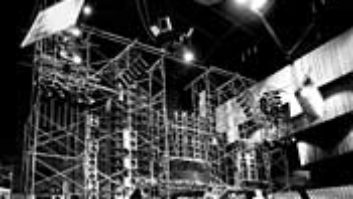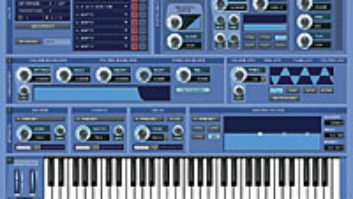
Splashy game ads were all over TV this past holiday season, completewith photo-realistic graphics, huge explosions and 180 bpm music. Thebest of the spots even resembled Hollywood action-movie trailers, andit was no accident. Games have grown up. Games are big business.
Technology has moved so fast in the consumer electronics world thatan entire generation knows nothing about Atari, Nintendo 64 or SegaDreamcast, let alone Pong, Asteroids or Pac-Man. For thecurrent generation of gamers, PlayStation 2 is already feelingoutdated, even though its introduction four short years ago started therevolution in gaming — both for graphics and sound.
“PlayStation 2 was the first game console to be released witha built-in DVD player,” says Jack Buser, manager, game developerrelations, at Dolby Laboratories. “A lot of gamers were playingDVDs for the first time on the same box they were playing games on.Consumers started to say, ‘Hey, if I fire up my home theater andthese DVDs sound so good in Dolby Digital, what gives with my games? MyDolby Digital light isn’t even lighting up!’ It was a wake-upcall for the entire industry.”
At the same time PlayStation consumers were calling Dolby withquestions, Dolby met with Microsoft and began to discuss thefeasibility of implementing true 5.1-channel Dolby Digital surroundinto its top-secret game console, Xbox. Having the luxury of designinga console for Dolby Digital from the ground up, the Xbox was able todeliver games with 5.1-channel audio on the day it launched.
“It was an entirely different problem we faced than when weoriginally developed Dolby Digital,” Buser explains. “Forgames, we realized we would have to do an encode essentially in realtime, meaning that if the Dolby Digital encoder saw PCM from the game,it would have to turn the crank extremely fast and get a Dolby Digitalbitstream out to the decoder fast enough so that the game player, whenhe pressed a button, could hear the sound happen at the exact sametime. Latency was absolutely critical.”
It is also crucial that the audio never touch the host processor, asthere isn’t a publisher in the world who will allow audio to compromisegraphics or game play. To that end, Xbox includes a separate DSP chipto handle the real-time encoding. The first big game to take advantageof 5.1 capability was Halo, which Dolby would use fordemonstrations with developers to let the technology sell itself.
Meanwhile, Dolby started looking at the market leader, PlayStation2, and began working on a 5.1 solution. Dolby Surround had been ongames for years, but it didn’t allow for a sub or split surrounds. Atthe very least, the company knew that it needed to provide a steppingstone to Dolby Digital, so engineers worked up the backward-compatibleDolby Pro Logic II.
“If you want game developers to think about these issues, youhave to give them a solution on the platform where they make the mostmoney, meaning PlayStation 2,” Buser says candidly. “At thetime, we had released Pro Logic II decoding into the consumer market,but we never really intended to have a new content program. We alreadyhad one! Dolby Surround. But then we knew that we needed to get thegame experience as close to a true 5.1 environment as possible. ProLogic II is not dissimilar to the original surround encoder, except itdoesn’t band-limit the surrounds and you have stereo panning in therear. Most importantly, it doesn’t touch the host processor.”
The first game to really take advantage of Pro Logic II was RogueLeader for GameCube, developed by Factor Five in Marin County,Calif. It’s a Star Wars game that takes the extra step ofproviding a channel test by having a Tai fighter fly overhead andaround the sound field. “GameCube is a very powerful console foraudio,” Buser notes. “The chips they are using, the audiohorsepower, the tools available to developers. But there’s no way toget digital audio out of the back, and that’s unfortunate. Still, itallows us to demonstrate that no matter whether you’re using analog ordigital cable, Pro Logic II would work, and it’s very cool.”
Because Xbox has the encoder built in, content creators simply placesounds in the game as they normally would, with whatever provided orthird-party tool they desire. For PlayStation 2 and GameCube, Dolbyprovides developers with an interactive Pro Logic II encoder foreffects or anything firing out of RAM. For the music and ambiences thatstream off of the disc, many audio folks are using Minnetonka’s SurCodeor Dolby’s DP563 to “pre-encode” those elements and mixinto the game for a seamless experience.
“Pro Logic II streams will mix together just fine,”Buser says. “If you plug your PlayStation 2 or GameCubedevelopment system into the TV, you can hear the mix on the fly. A lotof game developers are still doing confidence monitoring on consumerequipment. The ultimate, of course, would be to get one of our DP564s,which allows you to do Pro Logic II monitoring, Dolby Digital,headphones…it’s a fantastic piece of gear for gamedevelopment.”
And it’s a good time to be a game developer.
Tom Kenny is the editor of Mix.






